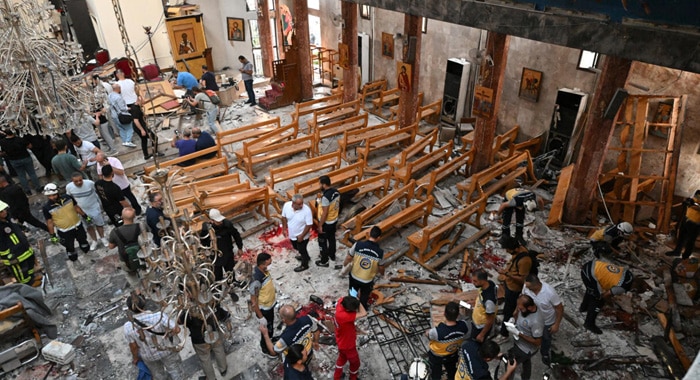What should have been a moment of religious observance turned into a scene of carnage this past Sunday, when a suicide bomber detonated inside the Mar St. Elias Greek Orthodox Church in Damascus, killing 25 worshippers and injuring 63 others. Initially attributed by Syria’s Ministry of Interior to the Islamic State (ISIS), the bombing took an unexpected turn when a lesser-known group, Saraya Ansar al-Sunna (SAS), claimed responsibility a day later. The incident has exposed a disturbing reality for Syria’s transitional rulers: the most dangerous threats may no longer lie in the legacy of Assad’s regime, but in the radical forces emerging from within their own revolution.
Though shrouded in obscurity, SAS has garnered notoriety in recent months for its string of attacks targeting religious minorities. According to expert researcher Aymenn al-Tamimi, the group appears to have splintered from Hei’at Tahrir al-Sham (HTS) the formerly jihadist force that led the military campaign to overthrow Bashar al-Assad in December 2024 and now dominates the transitional government. SAS, however, represents a hardline rejection of HTS’s pivot toward pragmatism and political accommodation, especially its efforts to tone down its Islamist image and cooperate with Western stakeholders.
Driven by ideological disillusionment, SAS has attracted former HTS members and like-minded militants who believe the revolution has strayed from its original religious vision. The group accuses HTS of abandoning Islamic law and compromising with secular forces. Although SAS shares much of its ideology with ISIS, it insists on being an independent organization. Still, doubts about that independence persist. Authorities have now arrested a cell allegedly led by an ISIS commander in connection with Sunday’s bombing, raising the possibility that SAS may serve as a covert extension—or at least a tacit ally—of ISIS operations.
In its justification for the church attack, SAS cited two reasons: the transitional government’s March decision to ban proselytizing aimed at converting Christians to Islam in the area where the attack occurred, and the administration’s broader failure to implement Islamic law. These grievances, couched in religious absolutism, reflect SAS’s intent to paint the new government as insufficiently Islamic—and therefore illegitimate in the eyes of radical militants.
The government now faces a precarious balancing act. Any effort to suppress extremist factions could reinforce their propaganda, allowing them to cast themselves as persecuted defenders of true Islam. But giving them space or remaining silent out of fear risks emboldening them further. In either case, the potential for radical recruitment grows. The longer SAS and similar factions operate unchecked, the more they threaten not only public security but the entire architecture of the transitional order.
There is also an international dimension to consider. Attacks such as Sunday’s cast serious doubt on the image of moderation and pluralism that Damascus is trying to promote in its foreign policy. The optics of a deadly church bombing carried out by an offshoot of a ruling coalition member erode international confidence and invite scrutiny about who exactly is running post-Assad Syria and at what cost.
Critics are increasingly laying the blame at HTS’s doorstep. They argue that by integrating former extremists into the post-revolution security apparatus, the group has allowed radicalism to metastasize. The government’s failure to clamp down on sectarian hate speech and religiously motivated violence has created fertile ground for groups like SAS to grow. Alarming precedents already exist: the massacres of Alawite communities in early March, and the clashes in Druze neighbourhoods across Damascus in late April are fresh reminders of the rising tide of sectarian unrest.
These events suggest a dangerous permissiveness, or worse, a paralysis within the governing coalition one that could allow ideological purists to challenge the very legitimacy of HTS from within its own camp.
The bombing at Mar St. Elias is more than an isolated tragedy. It is the first visible crack in the facade of unity that has held Syria’s transitional government together since Assad’s fall. If left unaddressed, these ideological fault lines may rupture into a full-scale insurgency one waged not by remnants of the old regime, but by the revolution’s own radical fringe.
The revolution that once fought tyranny may now have to fight itself.





